Space Settlements First!
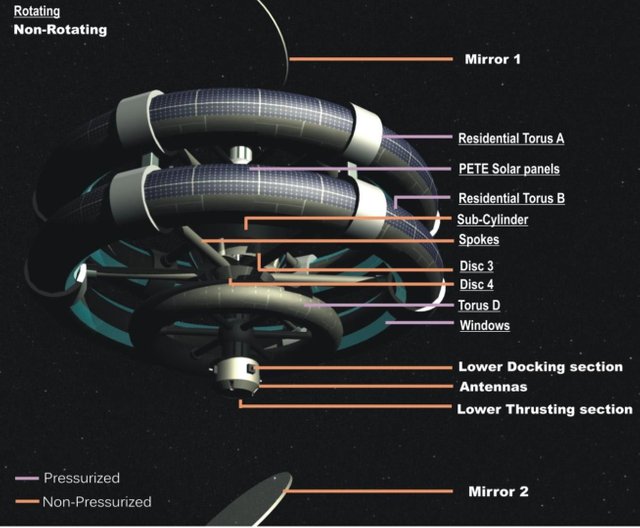
Yesterday I read a post written by @victor-lucas on Why We Should Colonize the Moon before Mars. Although I agree that Elon Musk's plan to colonize Mars is ambitious and may be a step ahead of reality and the order of things. I think colonizing the moon is as well a step ahead or at least something that should be done in conjunction with building an actual space settlement. Afterall, the moon is still 250,000 miles away.
A Space Settlement is a artificial colony built in the lower to upper orbit of the Earth.
According to Gomarketwatch.com
Reaching the moon would cost about $10 billion — estimates range from $7 billion and $13 billion — with an additional $28 billion to $52 billion being spent on the initial construction of base-related structures.
With the risk involved and the time it takes (a few days) to get to the moon, an orbiting space colony seems more feasible. The cost as well would probably be less at around $35 billion according to investigations done by NASA. Both plans will take several years to complete given the NASA annual budget of approximately $19 billion. Building a Space colony as well would allow you more options when it comes to securing resources since you could get them from both Earth and the Moon. In the long run, because the Space settlement is only a few hours travel time from Earth, it can serve as a relay point to transport Earth-based resources and manpower to the moon for construction of the moonbase.
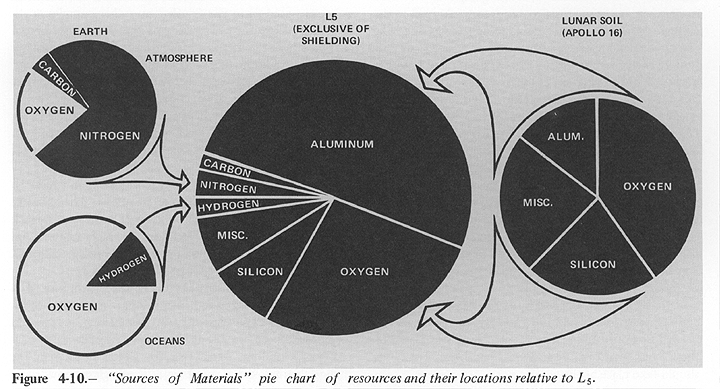
Overall Considerations
Cost
It was already mentioned in @victor-lucas post that the cost for colonizing Mars is unpredictable given that we do not have enough data or knowledge about the Red Planet itself. The cost of establishing a base on the moon is roughly $38 billion to $62 billion all in. The all-in cost for building and establishing a Space Settlement is around $35 billion. This of course does not include reoccurring costs such as resupply and maintenance costs. Financially it will still take many years for any project in space to complete.Distance
Mars is approximately 225,000,000 miles away requiring months of travel to reach. The moon is approximately 250,000 miles away requiring a few days to reach. A space settlement orbits the Earth and only takes a few hours to reach. Logistically, this means that Settlements in orbit are better positioned to receive goods and services from Earth. At the same time, solar power is continuously available in orbit. Most places on the Moon or Mars are in darkness half of the time (the only exception is the lunar poles of the moon.) For these reasons alone, Space Settlements should almost certainly come first, with lunar and martian colonization later

proposed network of refueling stations from NASA Technology
We have all the technology needed to reach space and the moon. Although rocket technology and space travel is still in it's infancy and because "launch vehicles are difficult to manufacture and operate," other alternatives have been considered to aid in enabling space settlement. One of these considerations is an Orbital tower that extends from Earth to the Space settlement for the transportation of goods, resources, and people. This of course has it's own set of challenges. As discussed in the following link. This leaves us with Rocket ships as the only current method of reaching space.
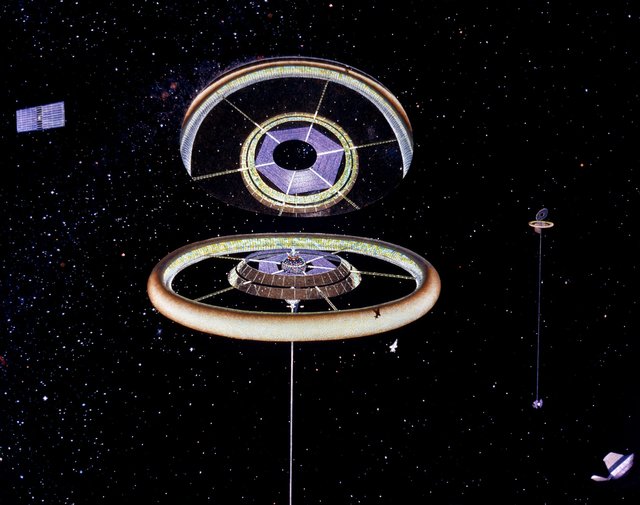
Proposed space settlement design from NASA Construction and Life Support
As mentioned in the following article, all of the following must be considered when building a space colony:
- Rather than live on the outside of a planet, settlers will live on the inside of gigantic spacecraft. Typical space settlement designs are roughly one half to a few kilometers across. A few designs are much larger.
- Settlements must be air tight to hold a breathable atmosphere, and must rotate to provide psuedo-gravity. Thus, people stand on the inside of the hull.
- Enormous amounts of matter, probably lunar soil at first, must cover the settlements to protect inhabitants from radiation. On Earth our atmosphere does this job, but space settlements need about five tons of matter covering every square meter of a colony's hull to protect space settlers from cosmic rays and solar flares.
- Each settlement must be an independent biosphere. All oxygen, water, wastes, and other materials must be recycled endlessly.
- Zero-g construction means bigger colonies. Space colonists will spend almost all of their time indoors. It is impossible for an unprotected human to survive outside for more than few seconds. In this situation, obviously bigger colonies are better. Colonies on the Moon or Mars won't be much bigger than buildings on Earth, especially at first. However, in orbit astronauts can easily move spacecraft weighing many tons by hand. Everything is weightless and this makes large scale construction much easier. Colonies can be made so large that, even though you are really inside, it feels like the out-of-doors.
Proposed interior view of space settlement from NASA
In Closing...
Im not saying that we aren't capable of settling on Mars or the Moon. Im not even saying that it's not possible. I just feel moving one step at a time will help us realize our goals more realistically and will lead to further developments which will get us farther in a shorter amount of time without as many risks. That's not to say there aren't already a lot of risks involved. In the end, it's there money and they can elect to spend it however they want.
I think any advancement in colonizing space, the moon, Mars, or any other planet or celestial body is enough to spark interest and revive people's passion for space exploration and travel. After all, It's space!
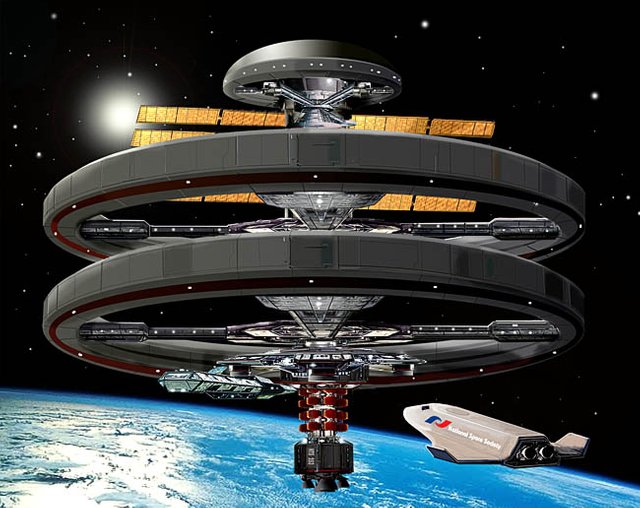
Please let me know what you think and share with me your comments!
Thanks for reading!

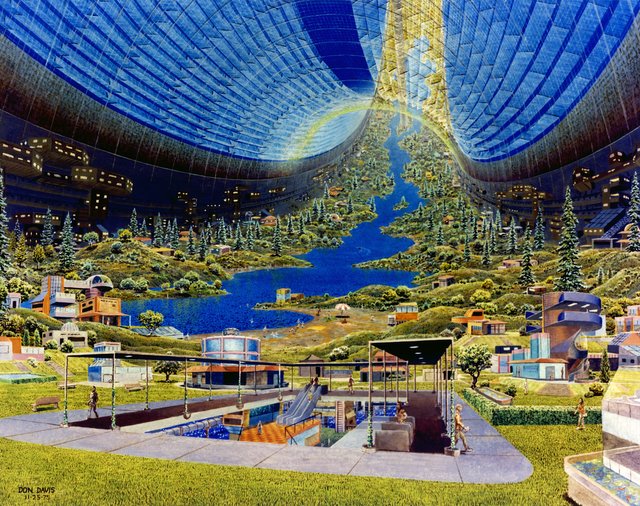
Doing much at Phobos doesn't make a lot of sense to me. It is only about 14 miles in Diameter and part of it is hollow. It just doesn't seem like a very stable place to land anything on. Eventually they say it will breakup and become a ring around Mars but that is a ways off.
Another alternative would be to build a network of space stations that we can leap frog between
Other than cost, is there any reason it would have to be NASA (or any other national or group of national space agencies) to build it?
Nope. NASA definitely isn't the only player out there.
May be not in my life time, perhaps when my grand children are around, we should be inhabit moon and mars